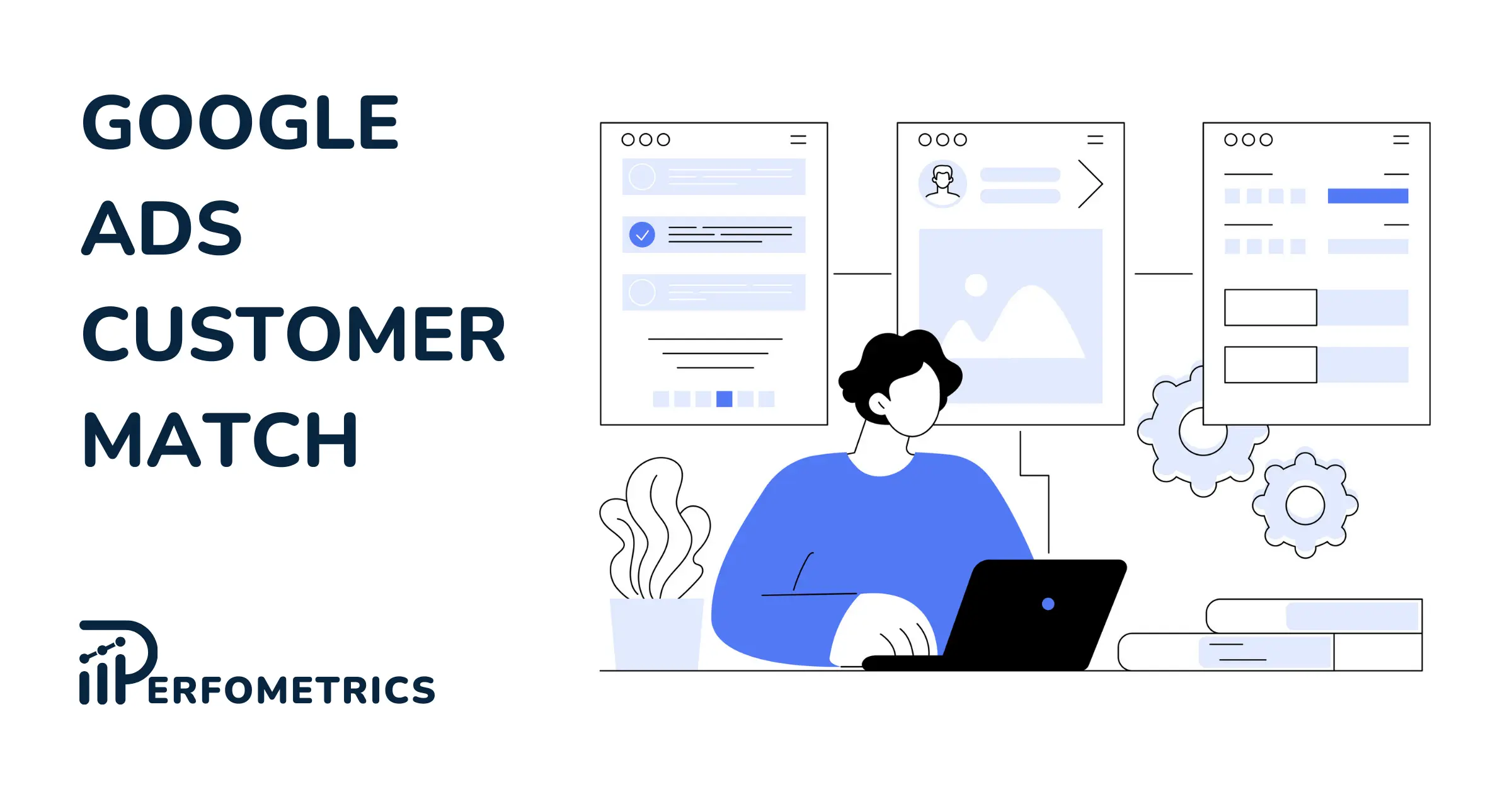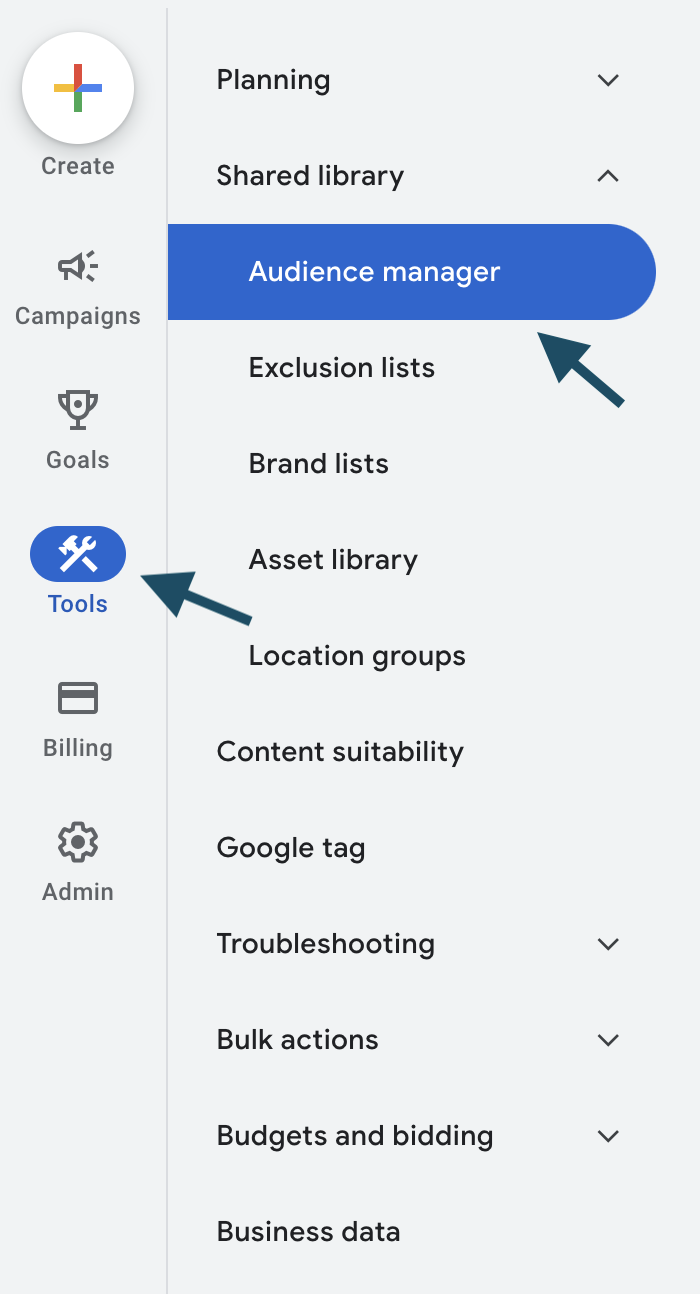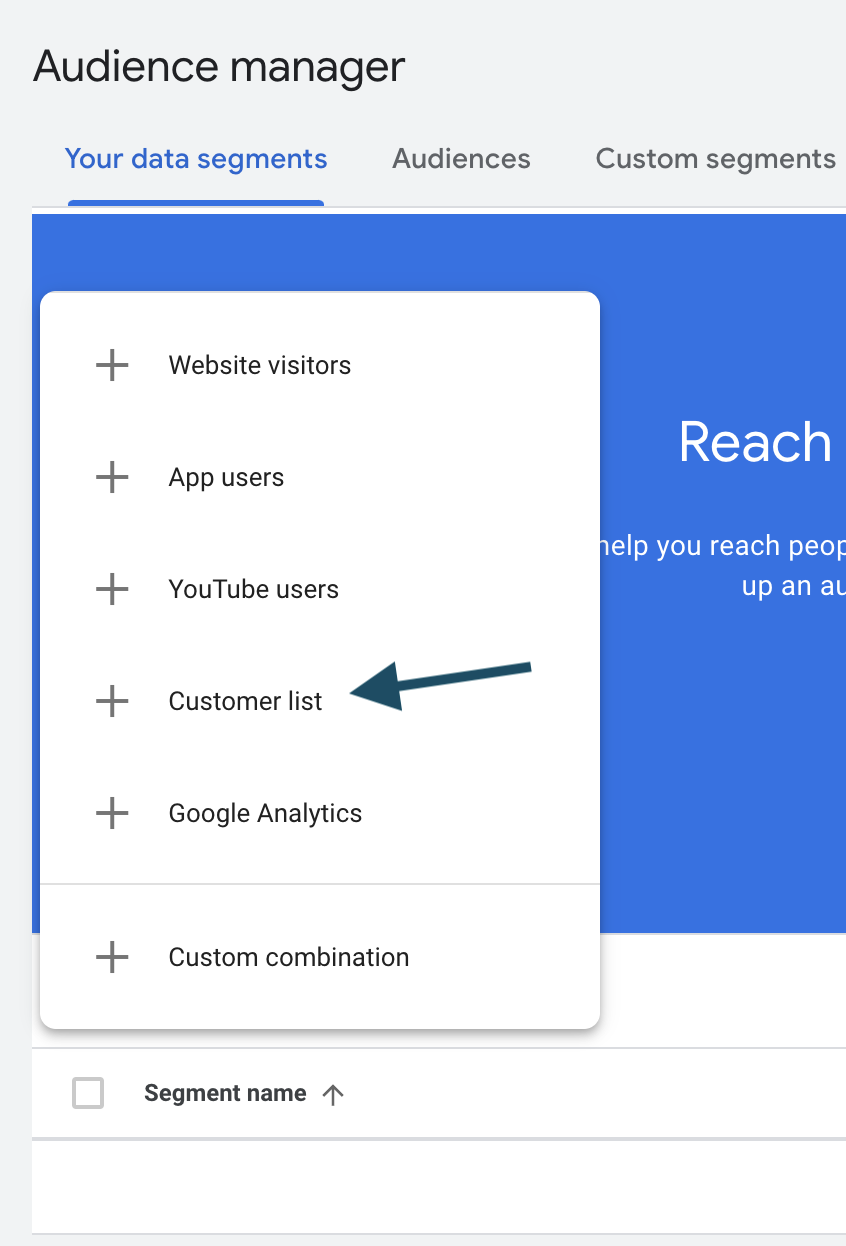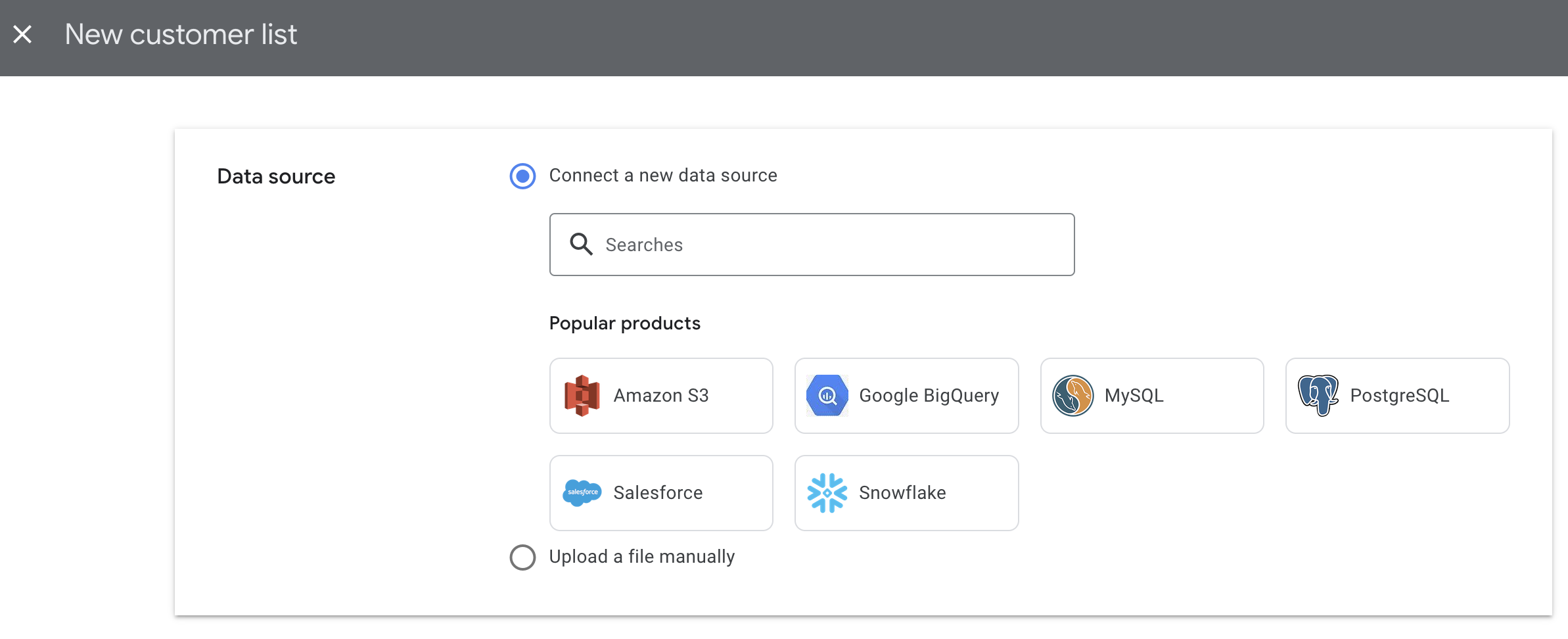Google Ads Customer Match: In-Depth Insights and Strategies

Since its inception in September 2015, Google Ads Customer Match has revolutionized marketing by using unique identifiers like email addresses, phone numbers, and postal codes to pinpoint your real audience.
We understand the power of leveraging customer data for more targeted and effective campaigns. It’s not just about reaching people; it’s about reaching the right people with the right message.
This ability to target and retarget across platforms such as Gmail, the Search networks (and Shopping), Discovery, the Google Display Network, and YouTube, ensures that your message finds its way to those who matter most to your business.
What is Google Ads Customer Match?
Google Ads Customer Match offers a dynamic way for you to utilize your customer data in your advertising strategies. This powerful feature in Google Ads allows you to upload your own customer information, like email addresses and phone numbers, to create highly targeted advertising campaigns. It’s a strategy that pivots on personalization, offering you a unique way to reach out to your audience across Google’s vast networks.
How Does Customer Match Work?
At the core of Customer Match is its ability to sync your CRM data integration efforts with Google’s user information. Customer Match functions by allowing you to use the data you have of your customers to reconnect and engage with them across Google’s platforms (Google Search, Google Shopping, Gmail, YouTube, and the Display Network). Once you upload your customer data list to Google Ads, this data is matched against the profiles of Google users. This enables you to create custom audience segments, which you can target or exclude in your ad campaigns, when a match is found, these individuals can be effectively targeted with ads across.
Google is committed to user privacy and data security, especially when it comes to sensitive customer data. In Customer Match, Google employs a secure and encrypted process to match customer data with user profiles. The data is used exclusively to create targeted ad campaigns and is not shared with third parties. This ensures that your customer’s privacy is maintained while allowing you to benefit from more precise targeting.
For additional information and explanations, check out Google’s official support page detailing on how they use the customer match data they receive.
Requirements for Customer Match
To use Google Ads Customer Match effectively for your marketing campaigns, there are specific criteria you need to meet. These guidelines are in place to ensure responsible and efficient use of the Customer Match feature. Here’s what you need to know to get started:
- Account Age: Your Google Ads account should be at least 90 days old.
- Spending Requirement: You need to have spent a certain amount in your Google Ads account. The exact figure varies, so you’ll want to check the latest requirements.
- Follow Google’s Rules: Make sure you’ve consistently followed Google Ads policies in the past.
- Good Payment Record: You should have a history of making timely payments in your Google Ads account.
- Collect Data Responsibly: The customer data you use (like emails or phone numbers) should be collected with your customers’ permission, respecting their privacy.
- Prepare Your Data Properly: Before uploading, format your customer data correctly, ensuring email addresses and phone numbers are structured properly.
- Secure Your Data: You’re required to encrypt (hash) the customer data using a method called SHA256 before uploading it to Google Ads.
- Respect Privacy Laws: Make sure you comply with relevant privacy laws, like GDPR in Europe or CCPA in California, when using customer data.
These requirements are designed to help you use Customer Match effectively and responsibly in your advertising strategies. For the most up-to-date information and detailed guidance, you should refer directly to Google’s official resources.
How to Setup Google Ads Customer Match
Setting up Google Ads Customer Match is a straightforward yet impactful process that allows you to leverage your existing customer data for more personalized advertising.
This section will guide you through the essential steps to effectively implement Customer Match in your Google Ads campaigns, from preparing your data file to uploading and using it strategically in your ads.
1. Prepare Your Customer Data File
- Gather Customer Information: Start by collecting customer details such as email addresses, phone numbers, and mailing addresses. This information must be from customers who have consented to share their data.
- Ensure Data Accuracy: Verify that the data is accurate and up-to-date. Inaccurate data can lead to mismatches and reduce the effectiveness of your campaigns.
- Format the Data: Organize your customer information in a CSV or Excel file. Ensure that each piece of data is in the correct format specified by Google Ads (e.g., phone numbers should include country codes).
| Data Type | Format Example | Notes |
|---|---|---|
| Email Address | john.doe@example.com | Lowercase, standard email format. |
| Phone Number | Country Code + Number, e.g., +15551234567 | Include the country code, remove any leading zeros, spaces, or dashes. |
| First Name | John | Use proper capitalization. |
| Last Name | Doe | Use proper capitalization. |
| Country | US | Use 2-letter ISO country codes. |
| Zip Code | 12345 | Appropriate format for the specific country. |
| Mobile Device ID | 2b6f0cc904d137be2e1730235f5664094b831186 | Typically, SHA256-hashed and lowercased. |
| Mailing Address | 1234 Main St, Anytown, USA | Format according to standard mailing conventions for each country. |
When preparing your data, ensure each column in your CSV or Excel file is clearly labeled (e.g., “Email Address”, “Phone Number”, etc.) and matches the corresponding format in the table above. This ensures that Google Ads can accurately process and match your customer data. Remember to hash sensitive data like Mobile Device IDs for security purposes.
2. Upload Your Customer Data File
- Access Your Google Ads Account:
- Log in to your Google Ads account.
- Navigate to the “Tools” tab.
- Under the “Shared library” section, select “Audience manager”.
- Create a Customer List Audience:
- In the Audience Manager, go to the “Audience lists” tab.
- Click the blue “+” button to create a new audience.
- Choose “Customer list” from the options provided.
- Upload Your Customer Data File:
- Choose between manually importing a file or connecting a data source.
- Follow the instructions to upload your CSV or Excel file.
- Google Ads will ask you to choose the type of data you’re uploading (e.g., email, phone number).
- After selecting the correct data type, make sure the file is in the right format and upload your file.
- Hashing Your Data (If Required):
- For certain types of data, like email addresses, Google Ads will automatically hash your data for security. However, for some data types like mobile device IDs, you may need to hash the data yourself before uploading.
- Set Up Your Audience Parameters:
- After your list is uploaded, define the parameters of your audience. This could include the membership duration, which is how long a user stays in your audience after you’ve added them.
- Wait for the Processing to Complete:
- Google will process your list and match it with users in its network. This can take up to 48 hours.




3. Use Customer Data for Observation or Targeting
- Choose Your Strategy: Decide if you want to use the data for observation (to gain insights about customer interactions with your ads) or for targeting (creating campaigns specifically for these customers).
- Create Targeted Campaigns: Use your customer match data to set up campaigns that directly address the needs and interests of your audience. This could include personalized ad copy, special offers, or information relevant to their previous interactions with your brand.
💡 For more, read : audience observation and targeting in Google Ads.
4. Update the Customer Data Regularly
- Maintain Your List: Regularly update your customer data list to include new customers and remove those who are no longer relevant. This ensures that your campaigns stay current and effective.
- Re-upload Updated Lists: After making updates, re-upload your customer list to Google Ads. This ensures that your targeting remains accurate and relevant, as Google will re-hash and match the updated data.
After following these steps, you should have a well set up Customer Match audience. For more detailed information, be sure to visit Google’s official support site.
Benefits of Using Google Customer Match
The Google Ads Customer Match feature offers a range of benefits that can significantly enhance your digital marketing strategies. Here’s an in-depth look at the key advantages:
Improved Targeting and Personalization
- Precise Audience Segmentation: With Customer Match, you can create highly specific audience segments based on your existing customer data. This allows you to tailor your advertising campaigns to different segments of your audience, increasing the relevance of your ads.
💡 For more, read: audiences in Google Ads.
- Enhanced Ad Personalization: By knowing who you’re targeting, you can craft more personalized ad messages that resonate with each specific group, leading to improved engagement and a better user experience.
- Cross-Device Targeting: Unlike traditional remarketing, Customer Match allows you to reach customers across different devices, providing a more comprehensive approach to retargeting. This helps in maintaining contact with users who switch devices, leading to higher cross-device conversions.
💡 For more, read: Google Ads device targeting.
Increased Campaign Efficiency
- Higher Conversion Rates: Targeting customers who have previously interacted with your brand often leads to higher conversion rates. These are individuals who already have a level of familiarity and trust with your brand.
- Cost-Effective Spending: By targeting people who are more likely to be interested in your products or services, you can use your advertising budget more efficiently, reducing wasted spend on less interested audiences.
- Enhanced Bidding Strategies: Customer Match data can be used to optimize your Smart Bidding campaigns. By providing Google with high-quality customer lists, you’re giving it valuable signals to fine-tune its bid optimization, potentially improving campaign performance.
💡 For more, read: Google Ads bidding strategies.
Re-engagement Opportunities
- Win Back Inactive Customers: Customer Match allows you to re-engage with customers who haven’t interacted with your brand for a while. By targeting these individuals with specific offers or information, you can encourage them to re-establish their relationship with your brand.
- Loyalty and Retention: Regularly engaging with your current customer base can foster loyalty and encourage repeat purchases. Customer Match makes it easier to keep your brand at the forefront of your customers’ minds.
Better Insights and Analytics
- Deeper Audience Insights: Using Customer Match can provide valuable insights into customer behavior and preferences, helping you to understand your audience better.
- Data-Driven Decision Making: The analytics derived from Customer Match campaigns can inform broader marketing strategies, helping you make more informed decisions about product development, market trends, and customer needs.
By leveraging these benefits, Google Ads Customer Match becomes a powerful tool, enabling you to create more effective, efficient, and personalized advertising campaigns.
Best Practices for Using Google Ads Customer Match
Integrating Google Customer Match into your digital marketing strategy enhances ad personalization and effectiveness. By strategically segmenting your audience and crafting ads that guide prospects through the sales funnel, you can improve conversion rates and maximize advertising ROI.
To ensure the highest quality and effectiveness of the Customer Match files you upload, consider these three key best practices:
- Segment Your Audience: Segmenting your customer list based on behavior, demographics, or purchase history allows for more personalized and relevant ad campaigns. Create different segments for new customers, repeat customers, high-value customers, and so on. This helps in tailoring your ads to meet the specific needs and interests of each group.
- Keep Your Data Updated: Regularly update your customer match lists to ensure the data remains current and accurate. This includes adding new customers and removing those who are no longer relevant.
- Focus on Privacy and Consent: Ensure that your data collection and usage comply with privacy laws and regulations. Obtain explicit consent from your customers for using their data in your advertising campaigns.
By focusing on these best practices, you can significantly enhance the quality of your Customer Match audience, leading to better targeting and higher engagement.
💡 For more, read: Google Ads best practices.
Optimizing Campaigns with Google Ads Customer Match
Google’s machine-learning algorithms thrive on data — the more detailed your first-party audience data, the better. This rich seedbed of information feeds Google Ads’ algorithms, allowing them to identify and connect with high-intent users effectively. Real-time signals and progressive optimization work together, forming an evolving strategy that continually hones your target audience for maximum impact.
- Leverage Smart Bidding with Customer Match Lists: Incorporate your Customer Match lists in Smart Bidding strategies. This approach uses advanced machine learning to optimize your bids in real-time, based on the likelihood of achieving your set goals like conversions or conversion value. By including Customer Match lists, you give Google’s algorithm additional data points to more effectively target high-value customers.
- Create Lookalike Audiences for Expansion: Utilize your Customer Match data to create lookalike (or similar) audiences. This is a way of reaching new potential customers who share key characteristics with your existing ones. It helps you expand your reach while maintaining a focus on high-potential prospects.
- Use Dynamic Remarketing: Combine Customer Match with dynamic remarketing campaigns. This technique allows you to show personalized ads based on previous interactions with your website. For instance, if a customer viewed a product but didn’t make a purchase, you can retarget them with specific ads for that product.
- Implement Cross-Selling and Upselling Tactics: Use insights from Customer Match to identify opportunities for cross-selling and upselling. Targeting your existing customers with complementary products or services can lead to increased average order values and customer lifetime value.
- Customize Ad Copy and Offers: Tailor your ad copy and offers to resonate with each segment. Highlight features, benefits, or promotions that are most likely to appeal to the segmented audience. This can improve engagement and conversion rates.
💡 For more, read: campaign optimization in Google Ads.
To help visualize the transition of users through the sales funnel with the aid of Google Customer Match, consider the following table:
| Funnel Stage | Action Step | Google Customer Match Role |
|---|---|---|
| Top of Funnel (Awareness) | Segment lists based on initial interaction | Introduce brand and value proposition with customized ads |
| Middle of Funnel (Consideration) | Address objections through tailored advertising | Utilize survey insights to present solutions that overcome hurdles to purchase |
| Bottom of Funnel (Conversion) | Cross-sell complementary products | Re-engage customers with personalized offers based on prior purchases |
Implementing these optimization-focused best practices can significantly enhance the effectiveness of your Google Ads campaigns, driving better results and achieving a higher return on investment.
Our Final Thoughts
Google Ads Customer Match stands as a powerful tool in the digital marketer’s arsenal, offering unparalleled opportunities for personalization and targeted advertising.
By leveraging your own customer data, you can craft highly specific and relevant ad campaigns that resonate with your audience, leading to improved engagement, higher conversion rates, and ultimately, a more robust bottom line.
Whether it’s through smart segmentation, tailored ad copy, or strategic cross-selling, Customer Match enables you to forge deeper connections with your customers and prospects alike. As the digital landscape continues to evolve, tools like Customer Match will be crucial in staying ahead of the curve and ensuring your advertising efforts are as effective as possible.
- Google Customer Match is an essential tool for enhancing your digital marketing strategy through tailored ad campaigns.
- Emphasizing personal connections, Customer Match utilizes provided identifiers for precision targeting within the Google advertising ecosystem.
- Automation leverages the magic of Customer Match without the manual struggle, paving the way for an impressive ROI.
- Stay ahead of the curve by updating and manage your Customer Match list using advanced integrations for sustained campaign success.
- Ensure your ads reach the intended eyes by employing Customer Match, dramatically shifting odds in your favor when every click counts.
- Boost your advertising efficiency by letting Google’s machine learning finesse your ad delivery to interested users.
- Lean into the capabilities of Google Customer Match to heighten engagement and foster customer loyalty within Google’s multifaceted network.
Remember, the key to success lies in continual testing, optimization, and adherence to best practices. With these strategies in your playbook, you’re well-equipped to maximize the impact of your Google Ads campaigns and drive meaningful business growth.
💡 For more, read: creating a successful Google Ads campaign.



